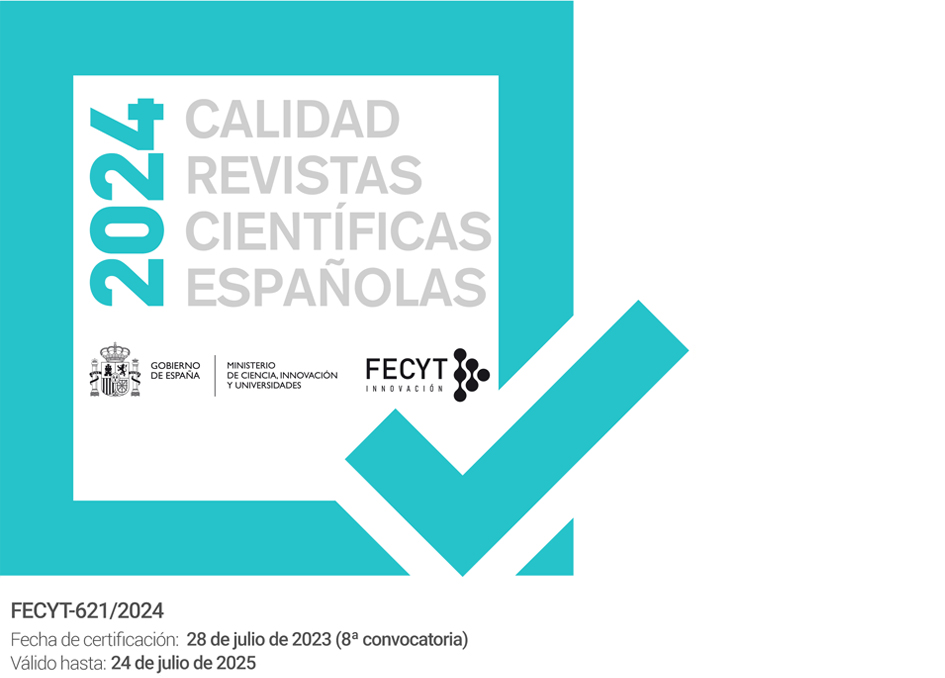Particularities of the Forensic Science Investigation of Transnational Serious Crimes
Resumen
The issue of serious crimes committed in a transnational or even supranational manner, as the specialists have stated before, involves more interest from the forensic science experts in their approaches in order to find a way of balance in analyzing and investigating the phenomena arose in the field of various criminality more spread currently. They have been taken into account by the forensic experts due to the fact that there are dilemmas they are confronted with. One of these leads with the idea of how serious crimes are investigated by means of forensic science's methods, technologies in the crimes trace of unauthorized technological transfer of nuclear or radioactive sources from the profile stations to the organized criminal groups' receivers. The current paper focuses on an atypical situation less discussed among the forensic experts facing serious states on achieving the forensic science examinations. It is about the technological transfer of nuclear or radioactive resources the organized criminal groups use in order to stock and sell it to the terrorist organizations, interested in manufacturing the mass destroying arms. The current paper approaches the scientific potential resources the forensic science provides on unconventional barriers of organized criminal groups in purpose to investigate from the forensic science's point of view the aspects of unauthorized technological transfer, collecting and stocking the nuclear and radioactive materials.
Descargas
Citas
ASHWORTH, A., Sentencing and Criminal Justice. Cambridge: Cambridge University Press, 2015. online available at: https://books.google.ro/books?hl=en&lr=&id=kUhLCgAAQBAJ&oi=fnd&pg=PR13&dq=scientific+evidence+the+penal+cases+transnational+serious+organized+crimes&ots=NXEbm4Sj9S&sig=0o4ywQqIvym8YqeFf-OTvOfnSjs&redir_esc=y#v=onepage&q&f=false
CARRAPICO, H., Transnational organized crime as a security concept. In F. Allum & S. Gilmour (Eds.), Routledge Handbook of Transnational Organized Crime, New York: Routledge, 2012.
CHATZIIOANNOU, K., The criminalization of hacking tools as a reasonable measure of protection regarding attacks against information systems and computer data. In M. Bottis, E. Alexandropoulou, I. Iglezakis (Eds.), Values and Freedoms in Modern Information Law and Ethics - Proceedings of the 4th International Conference on Information Law and Ethics, Ethens: Nomiki Bibliothiki Group, 2012, online available at: file:///F:/articles_2012_07.pdf
COHEN, D., Assessing the use of DNA expert evidence, by justice system participants, in Ontario criminal courts, University of Ontario Institute of Technology, August 2017, pp. 52, online available at: https://ir.library.dc-uoit.ca/bitstream/10155/828/1/Cohen_Dawn.pdf
COMMITTEE on Identifying the Needs of the Forensic Sciences Community, National Research Council, Strengthening Forensic Science in the United States: A Path Forward, The National Academies Press, Washington, 2009, online available at: http://www.nap.edu/catalog/12589.html
DOUGLAS, J. E., BURGESS, A. W., BURGESS, A. G., RESSLER, R. K., Crime Classification Manual. A Standard System for Investigating and Classifying Violent Crime. New Jersey: Wiley, 2013, online available at: https://books.google.ro/books?hl=en&lr=&id=j4CNiiDyOFQC&oi=fnd&pg=PT18&dq=forensic+examination+in+organized+crimes.+&ots=aEyLgC7Qsh&sig=0gkjW3z67wroAQAW2oz933cZDm8&redir_esc=y#v=onepage&q=forensic%20examination%20in%20organized%20crimes.&f=false
DUTELLE, A. V., BECKER, R. F., Criminal Investigation, Fifth Ed., Jones and Bartlett Learning, Burlington, 2019, online available at: https://books.google.ro/books?hl=en&lr=&id=hVBLDwAAQBAJ&oi=fnd&pg=PP1&dq=defense+in+forensic+criminal+cases&ots=NIzD7CmOPf&sig=xJK6wI2tBAhgtlAHPpdPZMK2L8U&redir_esc=y#v=onepage&q=defense%20in%20forensic%20criminal%20cases&f=false
FINDLAY, M., Juror comprehension and the hard case-Making forensic evidence simpler, International Journal of Law Crime and Justice, 2008, 36 (1), pp. 15-53. http://dx.doi.org/10.1016/j.ijsl.2007.07.001
GLESS, S., Transnational Cooperation in Criminal Matters and the Guarantee of a Fair Trial: Approaches to a General Principle. Utrecht Law Review, 2013, 9(4), online available at: file:///F:/244-553-1-PB.pdf
GUITTON, C., KORZAK, E., The Sophistication Criterion for Attribution: Identifying Perpetrators of Cyber-Attacks. The RUSI Journal, 2013, 158(4), online available at: https://www.tandfonline.com/doi/abs/10.1080/03071847.2013.826509
LAFREE, G., DUGAN, L., MILLER, E., Putting Terrorism in Context. Lessons from the Global Terrorism Database. London: Routledge, 2014, https://doi.org/10.4324/9781315881720
MAGHERESCU, D., New specific techniques of investigation for the economic offences. In A. Motatu & I. N. Militaru (Eds.). Diversity and Interdisciplinarity in Business Law, Bucharest: Adjuris – International Academic Publisher, 2017, online available at: http://www.adjuris.ro/reviste/daib/Diversity%20and%20Interdisciplinarity%20%20%20%20%20%20%20in%20Business%20Law.pdf
MATASSA, M., NEWBURN, T., Social context of criminal investigation. In T, Newburn, T. Williamson, A. Wright (Eds.), Handbook of criminal investigation, New York: Willan Publishing, 2007.
MEDEANU, T., Criminalitatea in actiune – omorul, terorismul si crima organizata, Bucharest: Lumina Lex Publishing House, 2006.
NEWBURN, T., WILLIAMSON, T., WRIGHT A., Handbook of criminal investigation, New York: Willan Publishing, 2007.
SAVONA, E., WILLIAMS, P., The United Nations and Transnational Organized Crime. London: Routledge, (2012). https://doi.org/10.4324/9780203044315
SCHLEGEL, L., Who, Why, What, When, Against Whom? The Problem With Researching the Effectiveness of Terrorism. The Geopolitics, March 2019, online available at: https://thegeopolitics.com/who-why-what-when-against-whom-the-problem-with-researching-the-effectiveness-of-terrorism/
STAMATIN, S., Fenomenul crimei organizate transfrontaliere. Analele Stiintifice ale Academiei ”Stefan cel Mare” a MAI a Republicii Moldova, XI(2), 2011, online available at: https://ibn.idsi.md/sites/default/files/imag_file/16.Fenomenul%20crimei%20organizate%20transfrontaliere.pdf
STANCU, E., Tratat de criminalistica, Bucharest: Actami Publishing House, 2001.
VERMEULER, G., DE BONDT, W., RYCKMAN, C., Rethinking international cooperation in criminal matters in the EU, 2012, online available at: https://books.google.ro/books?hl=en&lr=&id=uXZVTvDgQe8C&oi=fnd&pg=PA15&dq=international+cooperation+in+criminal+matters&ots=PX4lgIEnun&sig=5ENTND5qfFBKv0iOkl9CIOmkUaI&redir_esc=y#v=onepage&q=international%20cooperation%20in%20criminal%20matters&f=false
Descargas
Publicado
Cómo citar
Número
Sección
Licencia
Aquellos autores/as que tengan publicaciones con esta revista, aceptan los términos siguientes:- Los autores/as conservarán sus derechos de autor y garantizarán a la revista el derecho de primera publicación de su obra, el cuál estará simultáneamente sujeto a la Licencia de reconocimiento de Creative Commons que permite a terceros compartir la obra siempre que se indique su autor y su primera publicación esta revista.
- Los autores/as podrán adoptar otros acuerdos de licencia no exclusiva de distribución de la versión de la obra publicada (p. ej.: depositarla en un archivo telemático institucional o publicarla en un volumen monográfico) siempre que se indique la publicación inicial en esta revista.
- Se permite y recomienda a los autores/as difundir su obra a través de Internet (p. ej.: en archivos telemáticos institucionales o en su página web) antes y durante el proceso de envío, lo cual puede producir intercambios interesantes y aumentar las citas de la obra publicada. (Véase El efecto del acceso abierto).



